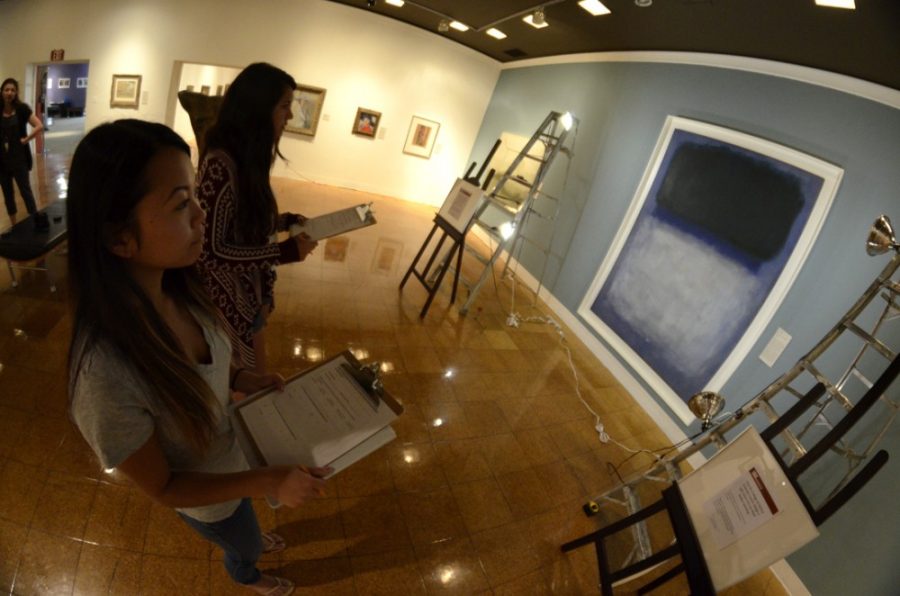2015 is the International Year of Light, and this October, the UA Museum of Art is celebrating by working with the College of Optical Sciences and the department of astronomy and Steward Observatory to integrate science and art in a whole new way.
There are multiple projects in the making to prepare for October, according to Gina Compitello-Moore, the museum’s marketing manager.
For one project, the art museum is working with Ali Khan, a senior studying optical science and engineering. The goal is to create a light source specific for Mark Rothko’s famous painting “Green on Blue” that will display the painting in its best light.
So far, Khan and the museum have set up the lighting test system. From an app on their phones, they are able to manipulate the temperature of the light source, which influences the way the colors in the painting appear to the eye.
The lowest temperature the light can be is 2,500 kelvins (2,226.85 degrees Celsius), and the temperature can be increased in increments of 200 K (73.15 C below zero).
“I’ve looked at this painting for a year, and I’m seeing things come out of the [painting] that I never saw before,” said Nathan Saxton, the art museum’s exhibition specialist.
As he scrolled the temperature dial on his phone, the light projected on the painting started to change from an orange glow to a bright bluish white, exposing different shapes and colors hidden underneath the top layers of blues, whites and greens.
This week, the museum will have members of the public take a survey in which they will choose their favorite lighting conditions for the painting.
“Rothko’s whole goal was to illicit a response to his works using only color, … so it was in perfect alignment with this project,” Saxton said. “We also chose this one because it’s one of our most popular ones.”
When asked if there is any “best” lighting for the painting, Saxton said that there might not be a right answer; part of the reason why Rothko’s painting was chosen is because it’s completely subjective. There’s no issue of visitors seeing a scene they recognize and carrying preconceived notions of how the scene should be lit.
Another suggestion was that it should be lit with the same lighting under which Rothko painted it. However, according to Saxton, it is unknown what the lighting was like, and if it was known, he wonders if it’s the museum’s job to display it that way, or to display it in a way that the public prefers to see it.
“It brings up a lot of cool questions, and I think it opens a discussion that we might never have opened before,” Compitello-Moore said.
By pulling together the strengths of a world-renowned optical sciences department and an art museum with a fantastic collection, the two departments can start to create something completely different than what’s been done before.
Other projects include a talk by Charles Falco, presenting evidence on the use of optical devices in painting as early as the 15th century. This is a controversial topic and of interest to art historians and optics students alike. In addition, there is a collaboration between Richard Poss and Rodger Thompson from the astronomy department, in which images of astronomical objects will be displayed next to older paintings that are as many light years away from the Earth as the painting is old. Lastly, there will be an exhibit of prints by James Turrell, an artist known for using light as his actual medium.
“I think it’s a really fantastic example of a collaboration between two pretty different university departments that are highly respected in their fields,” Campitello-Moore said. “And they’re both doing research that has an impact in the way people hang paintings in the future.”
_______________
Follow Mikayla Mace on Twitter.









